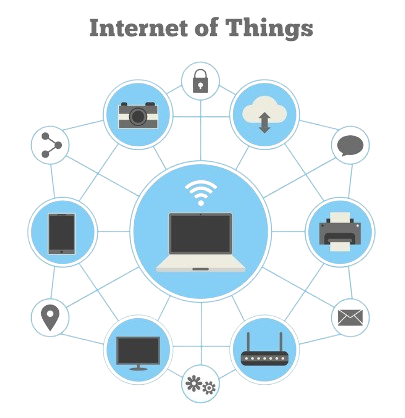Embracing interoperable IoT solutions is not just a technological necessity but a strategic imperative for businesses looking to thrive in the digital age. The journey towards interoperability may be challenging, but the rewards are well worth the effort.
The Internet of Things (IoT) is revolutionizing industries by connecting devices and enabling them to communicate and share data seamlessly. However, one of the biggest challenges in the IoT ecosystem is interoperability – the ability of different IoT devices and systems to work together efficiently. Developing interoperable IoT solutions is crucial for maximizing the potential of IoT, enhancing user experiences, and driving innovation. In this blog post, we will explore the importance of Interoperable IoT, the challenges involved, and the strategies for creating effective interoperable IoT solutions.
The Importance of Interoperable IoT
These solutions are essential for ensuring that diverse IoT devices and systems can communicate and collaborate effectively. This interoperability leads to several significant benefits:
- Enhanced User Experience
These solutions provide users with a seamless experience by allowing devices from different manufacturers to work together harmoniously. This integration enhances convenience and usability, making it easier for users to manage and control their IoT ecosystems.
- Scalability and Flexibility
With these solutions, businesses can scale their IoT deployments more efficiently. They can add new devices and systems without worrying about compatibility issues, ensuring that their IoT infrastructure remains flexible and adaptable to changing needs.
- Cost Efficiency
Interoperability reduces the need for proprietary solutions and vendor lock-in, which can be costly and limiting. By adopting open standards and protocols, businesses can achieve cost savings and have the freedom to choose the best devices and solutions for their specific requirements.
- Innovation and Collaboration
Interoperable IoT fosters innovation by enabling different stakeholders to collaborate and develop new applications and services. This collaboration drives the growth of the IoT ecosystem, leading to the creation of innovative solutions that address a wide range of challenges and opportunities.

Challenges in Developing Interoperable IoT Solutions
Despite its importance, achieving interoperability in IoT is not without challenges. Some of the key obstacles include:
- Diverse Standards and Protocols
The IoT landscape is characterized by a multitude of standards and protocols, which can create compatibility issues between devices from different manufacturers. This diversity makes it challenging to ensure seamless communication and integration.
- Data Security and Privacy
These solutions must address data security and privacy concerns. Ensuring that data shared between devices is protected and that privacy regulations are adhered to is critical for gaining user trust and maintaining compliance.
- Legacy Systems Integration
Many organizations have existing legacy systems that may not be compatible with new IoT devices and technologies. Integrating these legacy systems with interoperable IoT solutions can be complex and require significant effort.
- Device and Network Compatibility
Ensuring compatibility between different devices and networks is another challenge. Devices may have varying capabilities, communication protocols, and network requirements, making it difficult to achieve seamless interoperability.
Strategies for Developing IoT Solutions
To overcome these challenges and develop effective interoperable IoT solutions, businesses can adopt several strategies:
- Embrace Open Standards
Adopting open standards and protocols is crucial for achieving interoperability. Open standards provide a common framework that enables devices and systems from different manufacturers to communicate and work together. Organizations should prioritize solutions that adhere to widely accepted standards such as MQTT, CoAP, and HTTP.
- Implement Middleware Solutions
Middleware acts as an intermediary layer that facilitates communication and data exchange between different IoT devices and systems. By implementing middleware solutions, businesses can bridge compatibility gaps and ensure seamless integration across their IoT ecosystems.
- Focus on Security and Privacy
Security and privacy should be integral components of any interoperable IoT solution. Businesses must implement robust encryption, authentication, and access control measures to protect data and ensure compliance with privacy regulations.
- Collaborate with Industry Partners
Collaboration is key to developing interoperable IoT solutions. Businesses should work closely with industry partners, standardization bodies, and IoT consortia to develop and promote interoperable standards and best practices. This collaboration fosters innovation and drives the growth of the IoT ecosystem.
- Leverage APIs and SDKs
Application Programming Interfaces (APIs) and Software Development Kits (SDKs) provide tools and resources for developers to create interoperable IoT solutions. By leveraging APIs and SDKs, businesses can facilitate seamless integration and enhance the functionality of their IoT devices and systems.
Conclusion: The Future of Interoperable IoT
As the IoT landscape continues to evolve, developing interoperable IoT solutions will be critical for unlocking the full potential of connected devices and systems. By embracing open standards, implementing middleware solutions, prioritizing security and privacy, collaborating with industry partners, and leveraging APIs and SDKs, businesses can create robust and scalable interoperable IoT ecosystems.
Tanbits offers cutting-edge IoT services to help businesses develop and deploy interoperable IoT solutions that drive innovation and efficiency.
In conclusion, the future of IoT lies in interoperability. By focusing on creating seamless and integrated IoT ecosystems, businesses can enhance user experiences, drive innovation, and unlock new opportunities in the ever-expanding world of connected devices.
Embracing interoperable IoT solutions is not just a technological necessity but a strategic imperative for businesses looking to thrive in the digital age. The journey towards interoperability may be challenging, but the rewards are well worth the effort.











